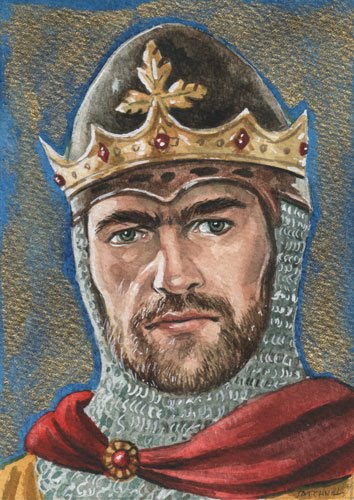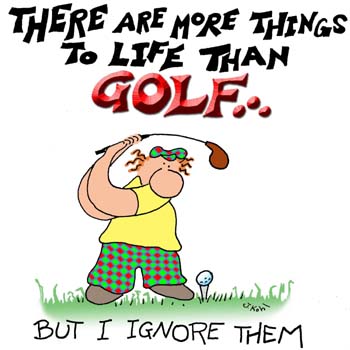Imagecredit:http://www.sciencekids.co.nz/images/pictures/maps/scotland.jpg
Imagecredit:http://www.english-heritage.org.uk/remote/www.english-heritage.org.uk/content/properties/hadrians-wall/hadrians-wall-timeline/hadrians-wall-general-view?quality=60
In about 500, an Irish group called the Scots (don't get confused!) migrated to the west coast of Scotland. They eventually took the throne under Kenneth MacAlpin and united the Scots and Picts in a kingdom called Dalriada. By the end of the 600s, all of Scotland had been converted to Christianity.
In the 8th and 9th centuries, Scotland was invaded by Vikings.
imagecredit:http://www.timeref.com/episodes/viking_ship1.jpg
Duncan (Donnchad mac Crínáin) became king of Scotland in 1034, but was incompetent, so Macbeth killed him and reigned as king from 1040-1057. Unlike Shakespeare's version of Macbeth, the real Macbeth was called generous and renowned. Macbeth was killed by Duncan's son Malcolm in 1057. Macbeth's stepson Lulach took the throne, but was killed by Malcolm who then took the throne in 1058.
Imagecredit:https://encrypted-tbn3.gstatic.com/images?q=tbn:ANd9GcTJzUnTKlAx85CGA72fupgxGuiYhJXYZ_lp5zJxK7h0ySkNZFBA
The Normans (Scandinavian Vikings) conquered England in 1066, and from there moved into Scotland. The Vikings had clans or chieftains. Chieftains needed to have followers who would back them in battle and who would attract other followers, and who would pay taxes to the chieftain. In return, the chieftain protected and defended his followers. Chieftain clans were competitive, and often rebelled against the Scottish kings.
In 1296, King Edward I of England successfully invaded Scotland. He was opposed by the Scottish, particularly William Wallace (of the movie Braveheart fame). BTW, the movie has many historical inaccuracies! The real William Wallace did have several major victories, the most famous being the Battle of Stirling Bridge in 1297. The famous speech given by Mel Gibson is fictional. Here's the speech from the movie, just because it's so good!:
Run, and you'll live. At least awhile.
And dying in your beds many years from now,
would you be willing to trade all the days,
from this day to that, for one chance,
just one chance,
to come back here and tell our enemies
that they may take our lives,
but they'll never take our FREEDOM!
Imagecredit:https://s-media-cache-ak0.pinimg.com/736x/dc/6f/2f/dc6f2fa916b98be5fdcdc0be896af4d3.jpg
The only recorded speech of the real William Wallace was given by an English source (thus questionable):
“when [Wallace] had collected an army of Scots in the battle of Falkirk against the King of England, and had seen that he could not resist the powerful army of the king, [he] said to the Scots, “Behold I have brought you into a ring, now carol and dance as well as you can,” and so fled himself from the battle, leaving his people to be slain by the sword…” Credit:https://aelarsen.wordpress.com/tag/william-wallace/
The English won that victory at Falkirk in 1298. William Wallace was captured near Glasgow by Edward I and executed in 1305. Here's the real William Wallace:
Imagecredit:http://a5.files.biography.com/image/upload/c_fill,cs_srgb,dpr_1.0,g_face,h_300,q_80,w_300/MTE1ODA0OTcxODE1NTY4OTA5.jpg
A young earl who fought in William Wallace's revolts was Robert the Bruce. Robert the Bruce led a revolt against the English and was crowned king of Scotland in 1306. There is a story that Robert the Bruce was discouraged and hiding from the English. He sat and watched a spider attempt to string a web from one corner to another. The spider failed twice but kept trying. This supposedly inspired him to keep trying against the English.
Robert the Bruce went on to defeat the English at the Battle of Bannockburn in 1314. Another legend about Robert the Bruce says that during this battle, he was armed only with his battle-axe. He was attacked by an English knight but stood his ground, and at the last moment, stood in his saddle and swung his axe. The blow was so powerful that it split the knight's iron helmet (and head) in two. Bruce's only regret was that he had broken his favourite axe. They really should make a movie about this guy!
Robert the Bruce went on to defeat the English at the Battle of Bannockburn in 1314. Another legend about Robert the Bruce says that during this battle, he was armed only with his battle-axe. He was attacked by an English knight but stood his ground, and at the last moment, stood in his saddle and swung his axe. The blow was so powerful that it split the knight's iron helmet (and head) in two. Bruce's only regret was that he had broken his favourite axe. They really should make a movie about this guy!
Imagecredit:http://www.memoirmentor.com/blog/wp-content/uploads/2014/07/Robert-The-Bruce.jpg
Robert the Bruce died in 1329 after seeing the English recognizing Scottish independence in 1328. His final wish was that his heart be removed and carried to the crusades by a noble knight. There didn't happen to be any crusades, so Sir James Douglas put the heart into a silver box and carried it into battle against the Muslims. Douglas and his men were defeated, but the heart was retrieved and brought back to Scotland to be buried.
There are even interesting stories about Robert Bruce's gravesite. He was buried in the center of Dunfermline Abbey under an elaborate alabaster and gold leaf tomb. Dunfermline Abbey was destroyed during the Reformation. A new church was under construction in 1818 when workers discovered a vault in which were the remains of a body enclosed in lead with a shroud of gold. Over the head, the lead had been formed into the shape of a crown. Inspection of the body showed that the heart had been removed. Finally, the curious public was allowed to view the body. It was at this point that several "relics" were removed: teeth and small finger bones. Oops. His remains have been reburied, but not before they pored tar into the coffin to "preserve" him.
Imagecredit:http://www.lockharts.com/wp-content/uploads/2010/01/Tomb_Robert_Dunfermline_Abbey.jpg
Back to our history of Scotland: the Scottish Reformation under John Knox occurred in the 1500s, so that Catholicism was replaced by Presbyterianism. John Knox believed that every person should have access to the Bible in their own language. He was a fiery preacher and he was a staunch opponent to Mary Queen of Scots.
When he died, John Knox wanted to be buried within 20 feet of St Giles Church, and so he remains, although that spot is now a parking lot. It is generally believed that he is under spot #23, although some people think it is spot #44:
Mary Queen of Scots kept her Catholic religion.
Imagecredit:https://capthk.files.wordpress.com/2009/07/john_calvin_1.jpg
Imagecredit:http://www.urbanghostsmedia.com/wp-content/uploads/2015/06/john-knox-grave-edinburgh-car-park-23.jpg
Imagecredit:http://scotlandsmary.com/wp-content/uploads/2015/07/mary-queen-of-scots_1.jpg
After Mary's French husband died, she returned to Scotland and married her Catholic cousin Lord Darnley. Darnley became jealous of Mary's Italian secretary David Riccio and had him murdered. Mary never forgave her husband. She became enamored of the Earl of Bothwell. Darnley's house blew up, and his body was found to have been strangled. Mary then married Bothwell. The Protestant nobles were enraged and forced Mary to abdicate. She fled to England and was eventually executed by Queen Elizabeth I of England. After Elizabeth, Mary's son James VI (raised a Protestant) ascended to the throne, and became the ruler of both England and Scotland.
Imagecredit:http://www.universitystory.gla.ac.uk/images/UGSP00151_m.jpg
Other notable events in Scottish history:
The University of St Andrews was founded in 1410.
The University of St Andrews was founded in 1410.
Golf and soccer were banned in 1457 by King James II, because they were keeping his archers from practicing.
Imagecredit:http://www.teetimes.info/wp-content/uploads/2010/12/funny-pics49.jpg
In 1707, England, Scotland, and Wales were united as one kingdom in the Act of Union.
In 1746, King George II banned kilts because they were seen as a rebellious symbol. Of course, the Scottish rebelled and kilts became a symbol of national pride.
Imagecredit:http://www.highlandshoppe.ab.ca/images/P/princecharliekiltoutfit2.jpg
An independence referendum was held on September 18, 2014. There was an 86% turnout, and the people voted 55% to remain part of the UK.
Interesting facts about Scotland:
-Scotland does not have an official national anthem.
-They do have a national instrument. Care to guess?
-The national symbol is a thistle.
-It's official animal is a unicorn.
-Scotch whiskey is the national drink.
-Each clan has a different pattern for their kilts.
-The phrase "going commando" originated from the fact that the Scottish regiments traditionally did not wear anything under their kilts.
Imagecredit:http://rlv.zcache.com/cheeky_im_a_real_scotsman_cartoon_vector_shirt-r22354d743bf040d4869e46822b9f3396_jg17n_1024.jpg?rlvnet=1
-The Scots claim to have invented golf but that is up for debate.
-There are over 3000 Scottish castles.
-A higher percentage of people have red hair than any other country.
-Scotland includes over 700 islands.
Famous Scottish people include Robert Burns (poet); writers Robert Louis Stevenson and Sir Walter Scott; actors David Niven and Sean Connery; singers Rod Stewart and Annie Lennox; AND we did not know that Alexander Graham Bell and John A MacDonald were born in Scotland!
Imagecredit:https://www.johndenugent.com/images/sean-connery-in-kilt.jpg














No comments:
Post a Comment